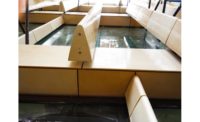If you are a building owner or facility manager preparing to launch a new or revamped maintenance program, the first step, according to the experts at Western Specialty Contractors, is to create a building component inventory, even before you do an inspection.
“While it sometimes feels like this step is unnecessary, it makes sense to do it because you’ll end up spending a lot more money and time if you don’t,” said Teddy Williams, Content Marketing Manager at Western Specialty Contractors. “A proper building component inventory will set your maintenance program on the firm foundation it needs to drive the results you’re looking to achieve.”
No matter your experience or technical expertise, creating a building component inventory is not complicated. Essentially, an inventory is a list of all the building components included in your preventative maintenance program, along with general information about each component. It can be as simple as a spreadsheet, or more complex, depending on what works best for you and your properties.
There are several factors to contemplate when compiling a building component inventory, but here are essentially three main ones to consider:
Listing the Building Components
Which components should you include in your building component inventory? Preventative maintenance costs money and time, so including everything may not be wise for your overall budget.
As a general rule of thumb, for each component, ask yourself: Is the component critical to the safe operation of the building? Is it expensive to replace or difficult to purchase off the shelf?
If you answered ‘yes’ to any one of those three questions, then that component should be included in your maintenance program and building component inventory.
Determining the Condition of Building Components
What is the current condition of the building component? Is that condition different from previous inspections or the same?
It’s usually a good idea to create what’s called a condition rating scale, which can be as simple as good, fair or poor, or it can be more complex like a 1-10 numerical scale.
The important factor to consider is that the scale allows you to understand the condition of the property’s main components when you look at your inventory.
Figuring Out the Age of Each Component
An inventory with just a list of components and their conditions is powerful, but figuring out the age of each component will supercharge your results and save you a substantial amount of time. Here are a few questions to ask:
- How long is the component supposed to last?
- How old is the component?
- How much longer is the component expected to last?
By answering these questions, particularly the last one, you will be able to time repairs better, make budgets more accurate and avoid unnecessary costs.
Once you have a sound building component inventory in place, you can now begin your facility inspections guided by a clear vision.
For assistance in creating a building component inventory, contact the Western Specialty Contractors branch location nearest you - http://www.westernspecialtycontractors.com/western-locations/.






Report Abusive Comment